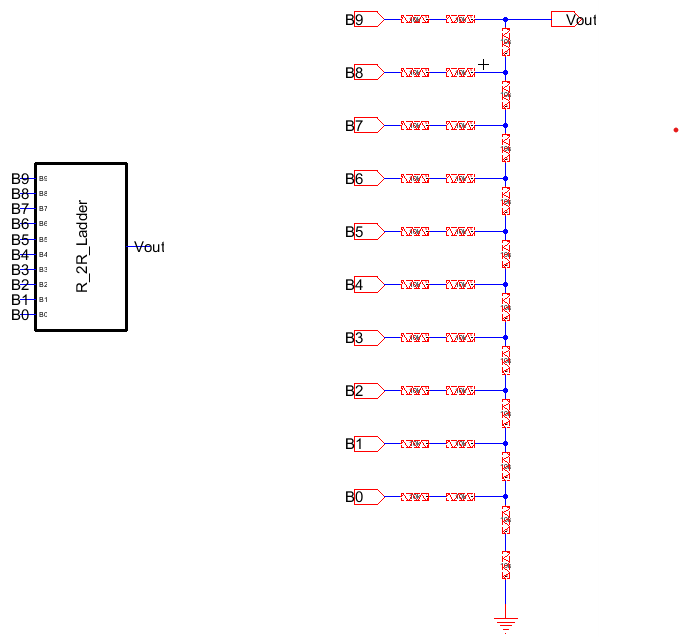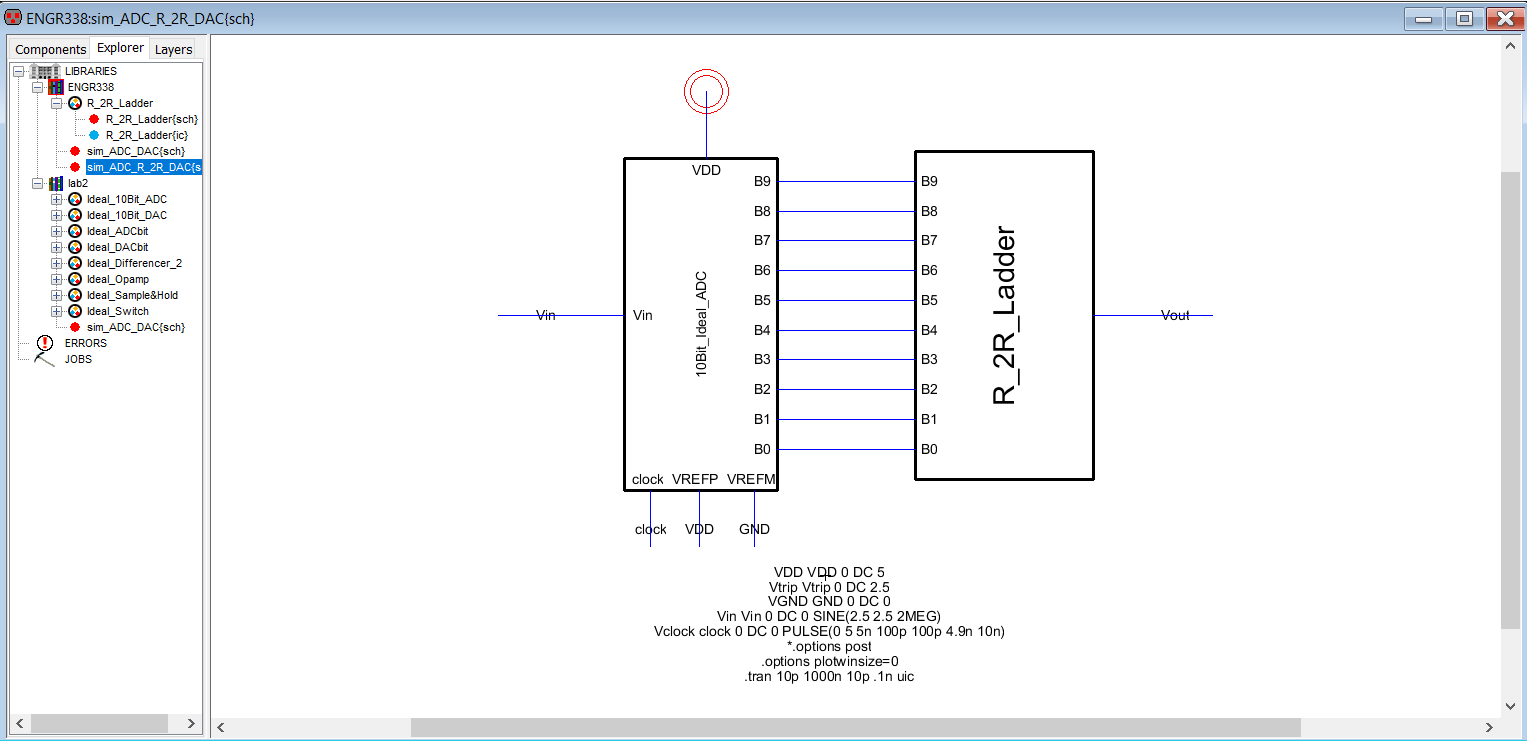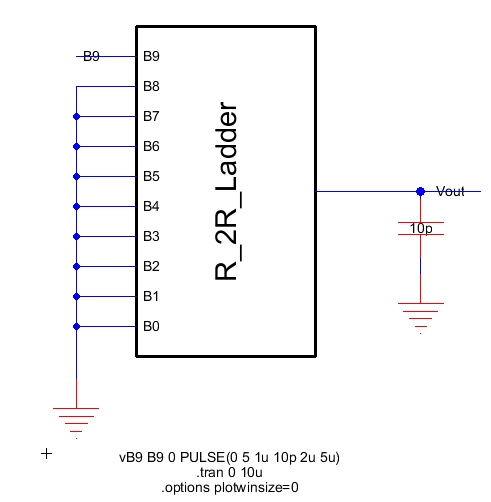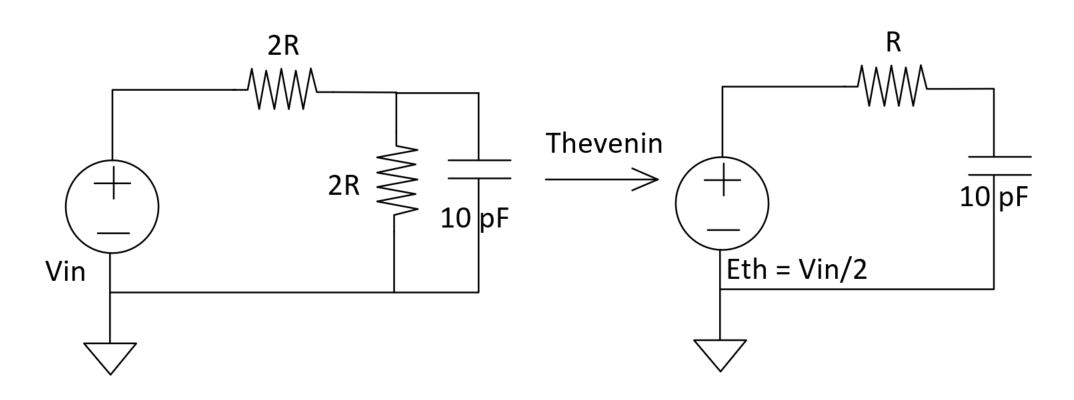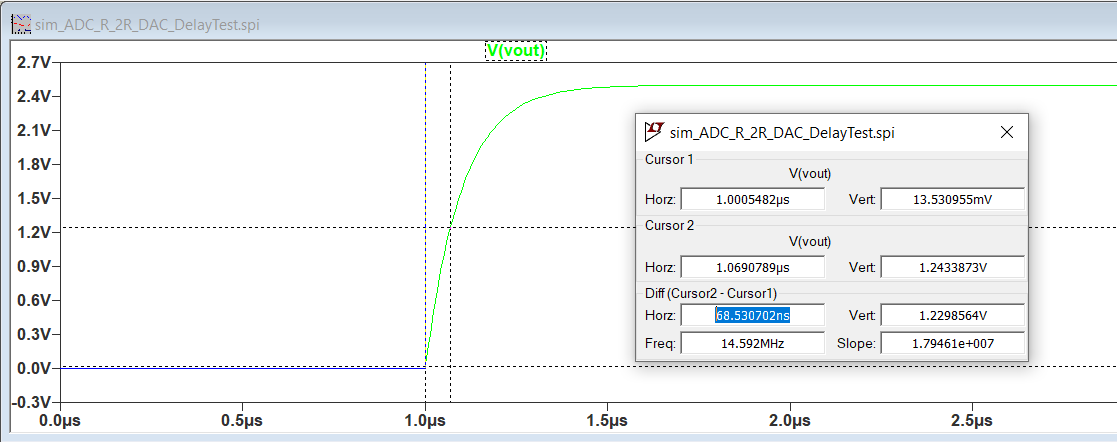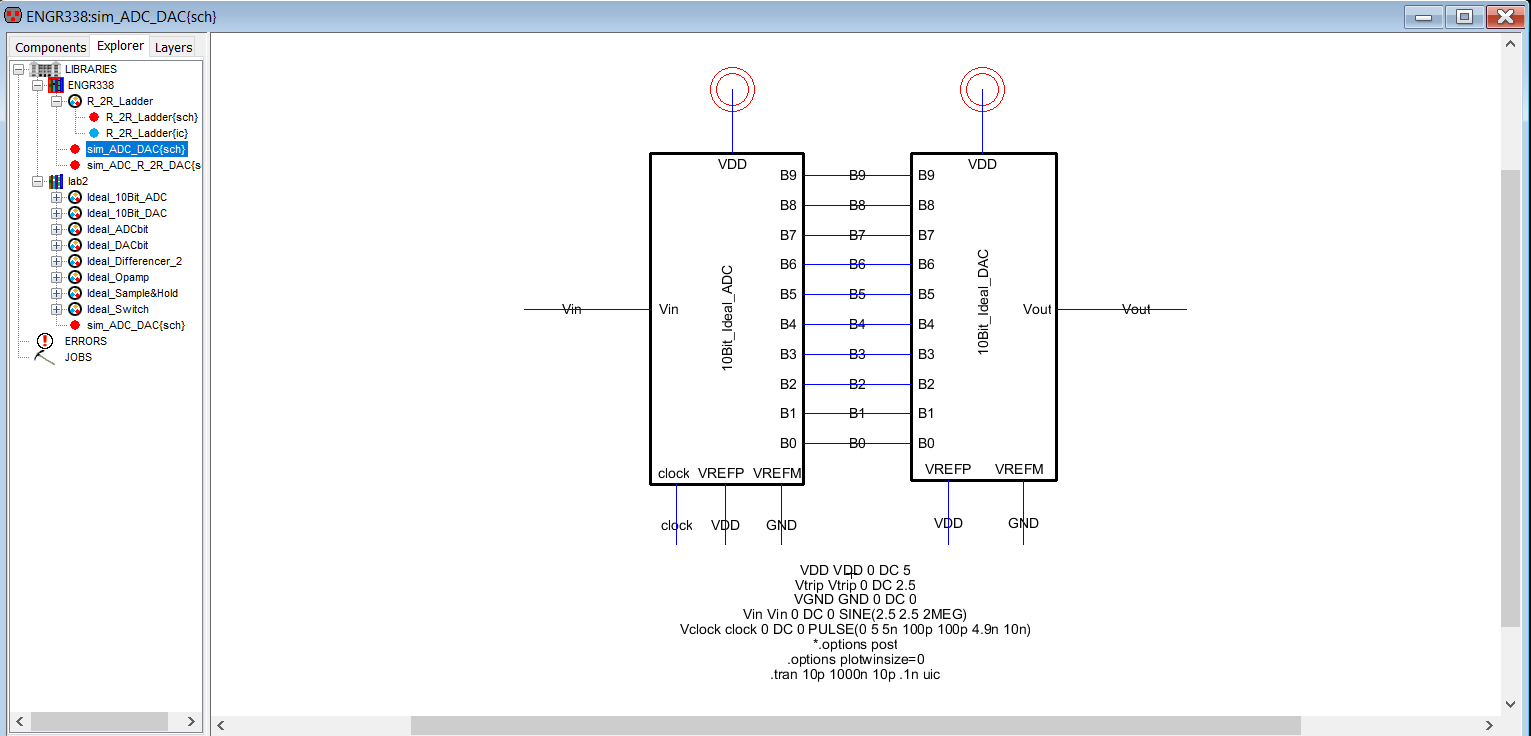
Figure 1: Schematic view of the ideal ADC/DAC.
Figure 2 shows the simulation results from LTspice.

Figure 2: Simulation of ideal ADC/DAC.
|
|
|
| Item |
Quantity |
|
|
|
| LTspice Electric VLSI Ideal ADC/DAC Library |
1 1 1 |
|
|
|


